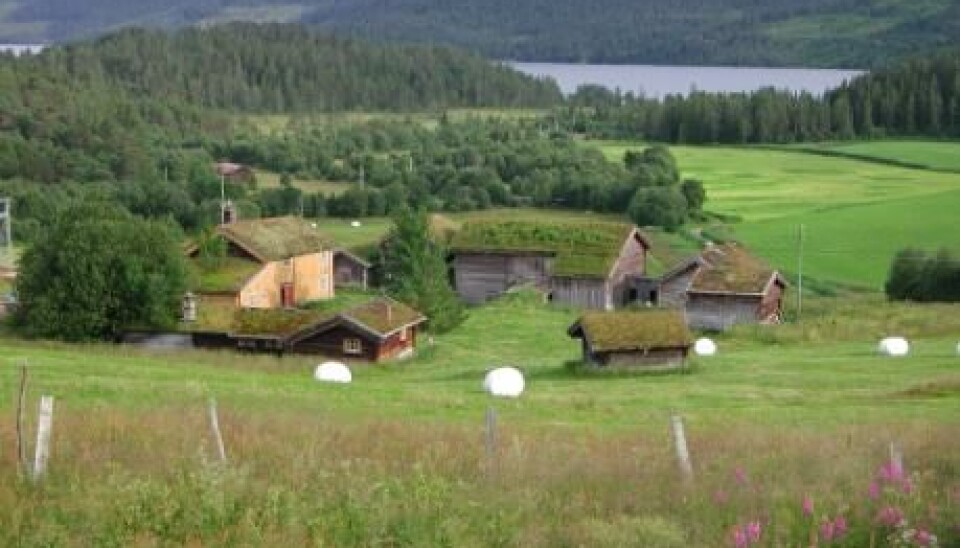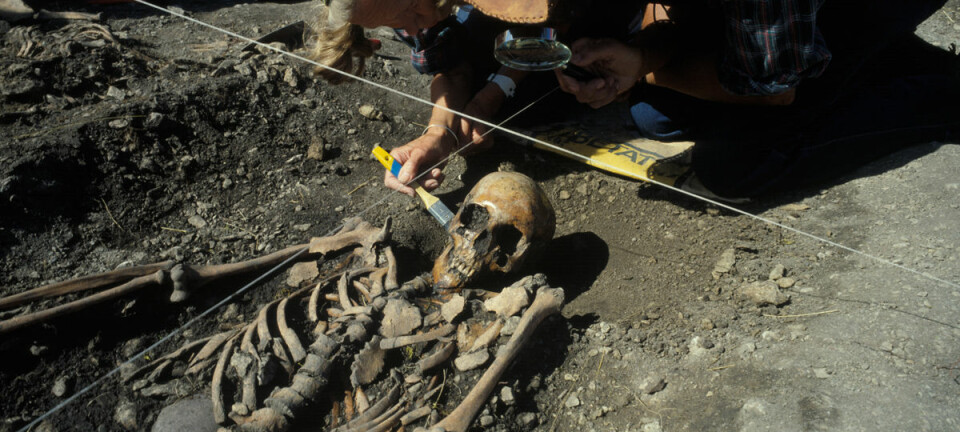This article was produced and financed by Norwegian Institute for Agricultural and Environmental Research

Updated estimate for nitrogen losses in agriculture
Nitrogen leaching and runoff in agriculture is potentially harmful to the environment. A new report reveals that the overall estimate used in Norway to determine nitrogen losses from agriculture is lower than it should be.
Denne artikkelen er over ti år gammel og kan inneholde utdatert informasjon.
Human activity is one of the main causes for greenhouse gas emissions. Some of these emissions arise from earth and mineral fertilizers, while others are caused indirectly by nitrogen runoff and leaching in agriculture.
Leaching is the definition used to describe the process when rainwater is washed through the soil, carrying with it dissolved nutrients from the soil. As a consequence, the nutrients enter into groundwater, streams, rivers, lakes and eventually the sea.
In 2011 Bioforsk was commissioned by the Norwegian Climate and Pollution Agency (KLIF) to write a report on nitrogen losses in agriculture, and thus determine an updated estimate for the amount of applied nitrogen which is lost due to runoff and leaching in agriculture. The report will be taken into account when KLIF is to determine Norway’s national greenhouse gas emissions later this year.
The results of the report have now been made public, and show that Norway has operated with a lower overall estimate than that which is actually the case. However, seeing as both site and crop specific factors have an impact on nitrogen losses, the difference in losses from various regions in Norway is substantial. The researchers propose that instead of using a single value to estimate nitrogen losses in Norwegian agriculture, one should rather operate with regional values that illustrate the situation more accurately by taking area specific differences into account.
Nitrogen leaching in agriculture
The leaching of nitrogen, an important plant nutrient, is of particular concern. During heavy rainfall, nitrogen, especially in the form of nitrate, moves easily through soil with the water flow.
When nitrate is leached into groundwater and streams, it pollutes the water and may be harmful to the environment. Should the nitrogen get as far as the sea, it may lead to unwanted algae growth. Nitrate leaching also contributes to the emission of the potent greenhouse gas, Nitrous oxide (N2O).
FracLEACH – a default value
The fraction of leachate (FracLEACH) refers to the amount of applied nitrogen that is lost through leaching and runoff in agriculture. In 1995 the Intergovernmental Panel on Climate Change (IPCC) defined a default FracLEACH value of 30 percent, which is used to calculate indirect N20 emissions from managed soils.
In Norway, however, the default value used is significantly lower. Based on calculations from 1998, the FracLEACH Norway has operated with for the past 14 years is 18 percent.
"In the late 1990’s, we had to report on our national greenhouse gas emissions. Norway was free to use the standard FracLEACH estimate of 30 percent, but this would mean that we would be worse off in regard to greenhouse gas emissions from runoff and leaching in agriculture than was really the case. After some hasty calculations, Norway came up with the estimate of 18 percent. This number has since been highly debated," says Marianne Bechmann, a researcher at Bioforsk.
Updated estimate
The National Agricultural Environmental Monitoring Program, JOVA, has conducted a comprehensive study to provide an updated estimate of nitrogen leaching in relation to the amount of nitrogen applied in agriculture.
Based on data obtained from nine agricultural catchments and a field study site that together represent the main agricultural production systems in Norway, JOVA’s researchers have discovered that the overall nitrogen losses from agricultural areas are more substantial than the current FracLEACH value portrays.
The results presented in the report show that the overall FracLEACH estimated in Norway is in fact 22 percent, and not the current default of 18 percent. This estimate covers a variation between sites from 16 percent on grassland in Valdres to 44 percent in intensive vegetable, potato and cereal production areas in the southernmost part of Norway.
Regional FracLEACH-values recommended
The FracLEACH variation between the studied sites, is mainly due to differences in precipitation and runoff, but factors such as nitrogen balance, soil tillage and denitrification processes also play a part in influencing the site specific FracLEACH.
In short, both site and crop specific factors have an influence on the amount of nitrogen lost through surface and subsurface water.
"All in all, the calculated values of FracLEACH presented in our report reflect a substantial variation in nitrogen losses and factors influencing nitrogen losses in Norwegian agriculture," says Marianne Bechmann.
"According to the guidelines of IPCC, nitrogen losses should be calculated based on the concept defined by FracLEACH. In our report we suggest that a regional FracLEACH will give a more exact estimate of FracLEACH in comparison to the one value for the whole country. These regional values should reflect differences in runoff and differences in production systems and soils in various areas."































